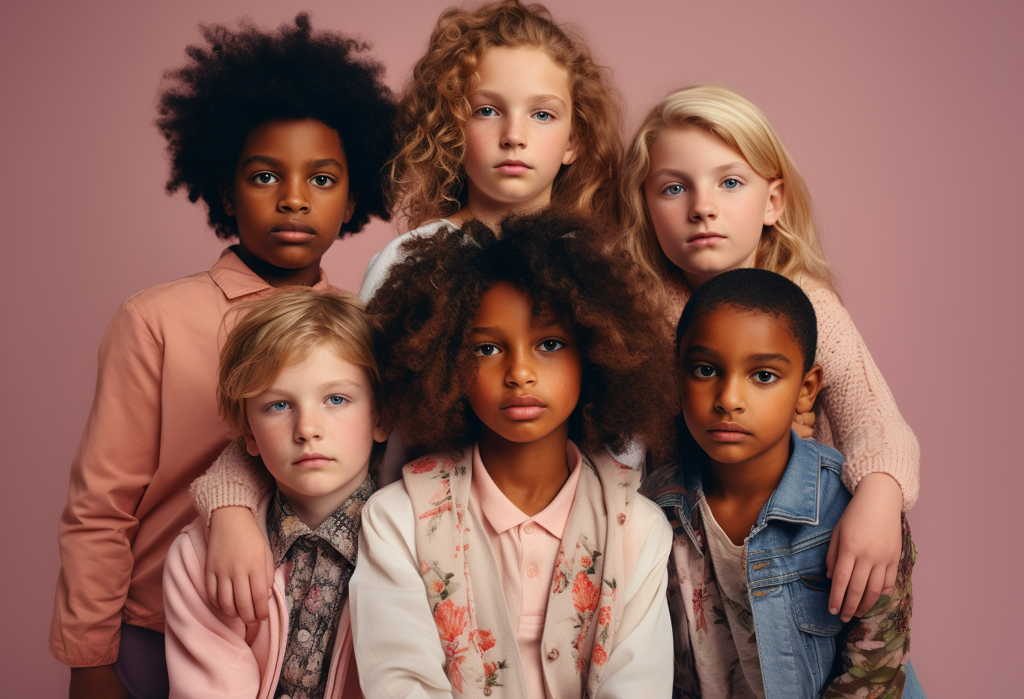As parents, guardians, or doting aunts and uncles, we want our children to not only feel comfortable in their clothes but also look radiant and confident. When dressing kids, we often focus on trends, brand names, or convenience—but one of the most overlooked factors in children’s fashion is skin tone. Just like adults, kids have different skin tones and undertones that can either be enhanced or muted by the colors they wear. Learning how to dress kids with different skin tones can instantly elevate their wardrobe, make their features pop, and boost their self-confidence.
This guide to dressing kids by skin tone USA is the ultimate resource for understanding how to select colors that complement your child’s natural beauty. Whether your child has fair, medium, olive, tan, or dark skin, or whether they lean warm or cool in undertone, this guide will help you build a wardrobe that makes them shine.
So whether you’re shopping for a seasonal refresh or curating a timeless capsule wardrobe, this guide will help you confidently choose the best clothes for kids with dark skin tones, fashion for kids with olive skin tones USA, or even the best outfits for kids with medium skin tones. Let’s dive into the beautiful world of color and style!
Read More: Top 8 Skincare Brands for Children
Understanding Skin Tones
Skin tone refers to the surface color of the skin, while undertone is the subtle hue underneath. Both work together to influence which clothing colors are most flattering.
Main Skin Tones:
- Fair Skin: Typically very light, with pink or cool undertones. Tends to burn easily in the sun.
- Medium Skin: A beige or golden tone, often neutral or warm. Tans more easily.
- Olive Skin: Characterized by a greenish undertone with beige or light brown overtones.
- Tan Skin: Deeper than medium with golden or neutral undertones.
- Dark or Deep Skin: Ranges from warm cocoa to deep espresso, rich in melanin.
Undertones:
- Cool: Bluish, pink, or red tints under the skin.
- Warm: Yellow, peach, or golden hues beneath the surface.
- Neutral: A mix of both; the skin may not lean strongly one way or the other.
Understanding this combination is essential when figuring out how to choose clothes for kids skin tones that bring out the best in their appearance.
Best Colors for Kids with Fair Skin Tones
Fair-skinned children, often with cool undertones, benefit from softer, cooler shades and rich jewel tones. Think lavender, mint green, powder blue, or soft rose. These colors create contrast without overwhelming their delicate complexion.
Avoid overly bright shades like neon green or yellow, which can clash and wash out the skin tone.
Top Pick: A lavender or light blue dress for girls, or a navy polo shirt for boys.
Best colors for kids with fair skin tones include:
- Baby blue
- Dusty pink
- Emerald
- Lavender
- Soft gray
- Sky blue
These shades highlight the skin’s natural radiance while ensuring balance. If you’re wondering about kids clothing colors for light skin tones, this palette is a winning place to start.
Check out this: Classic Tales Brought to Life in Kids’ Bedroom
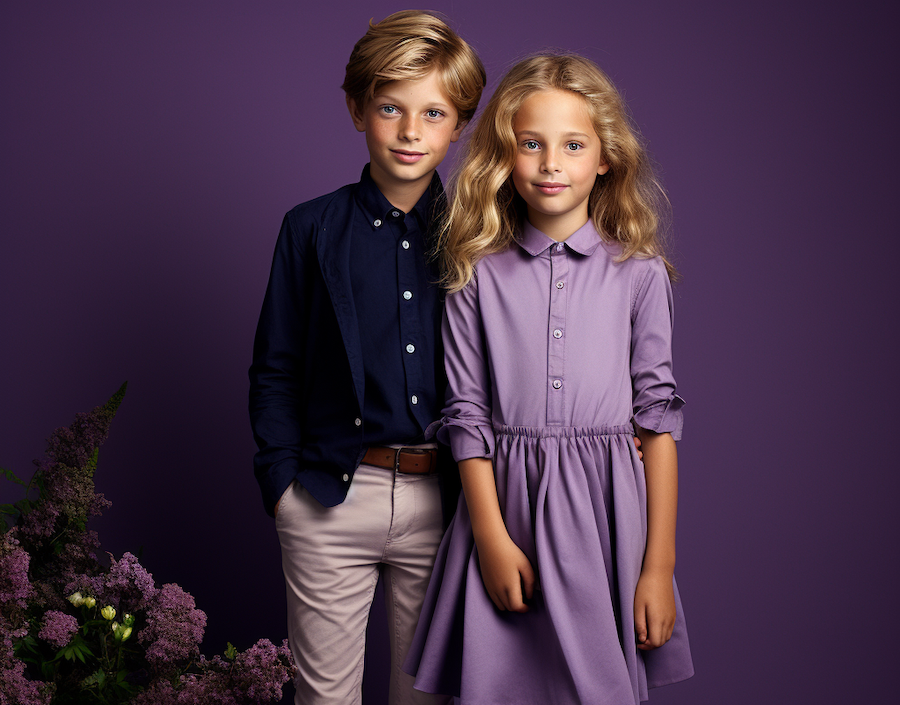
Dressing Medium-Skinned Kids
Medium skin tones are one of the most versatile and forgiving when it comes to color. These kids look amazing in earth tones and saturated colors that warm up their appearance—think mustard yellow, olive green, teal, and warm reds.
Top Pick: A mustard yellow skirt with a floral blouse for girls, or an olive-green shirt with denim shorts for boys.
Best outfits for kids with medium skin tones:
- Burnt orange
- Olive
- Navy blue
- Turquoise
- Sandstone
- Marigold
This group often includes neutral or slightly warm undertones, giving you the freedom to play with both bold and muted hues without going wrong.
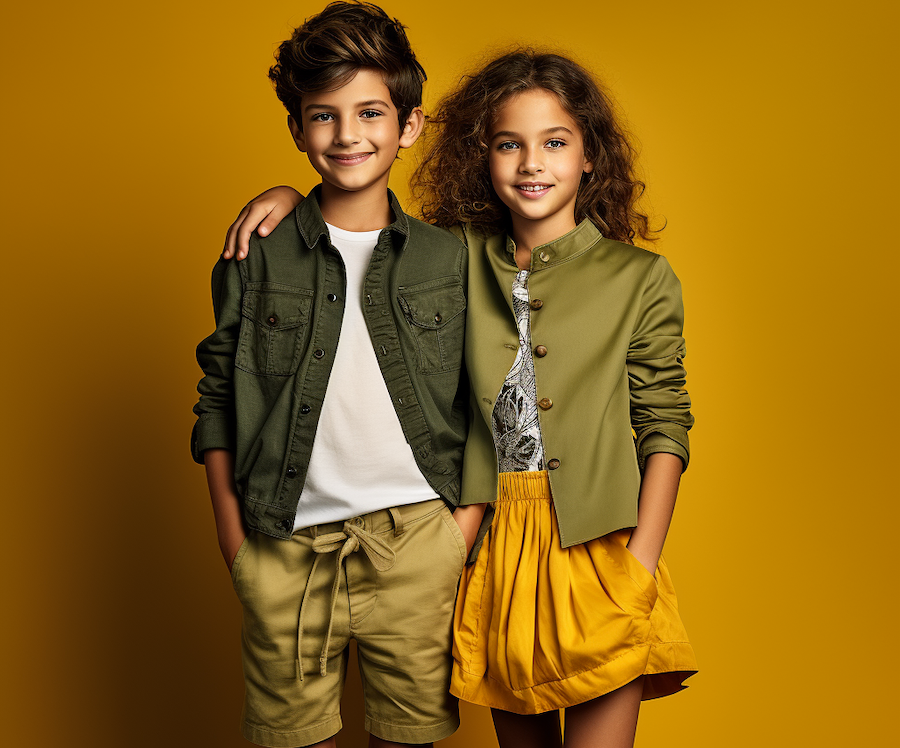
Read this blog: Eva Chen Partners with H&M for Sustainable Fall Kids’ Collection
Dressing Olive-Skinned Kids
Fashion for Kids with Olive Skin Tones USA
Kids with olive skin tones have a beautiful balance of warm and cool undertones, meaning they can pull off a wide variety of hues. Coral, brick red, teal, sea green, and even icy pastels can look exceptional.
Top Pick: A coral or salmon-colored dress for girls, and a forest green or maroon top for boys.
Fashion for kids with olive skin tones USA highlights:
- Coral
- Sage green
- Deep red
- Cobalt blue
- Peach
- Light teal
This group benefits from contrast, so you can experiment with lighter hues or deeper tones—just avoid muddy shades that mute their natural glow.

Related Blog: Safe Sunscreen for Kids: The Ultimate List for All Skin Tones
Dressing Dark-Skinned Kids
Dark and deep skin tones are radiant and striking, and bold colors only add to their brilliance. Jewel tones, saturated hues, and neons all pop. Avoid browns and muted blacks that can blend too closely with their skin and lose definition.
Top Pick: A hot pink ruffled dress or a bright blue statement tee.
Best kids clothes for deep skin tones 2025:
- Fuchsia
- Sapphire blue
- Lime green
- Ruby red
- Sunflower yellow
These high-impact shades celebrate deep skin tones and bring out their richness. When planning kids wardrobe ideas by skin tone, make sure to stock these eye-catching favorites.
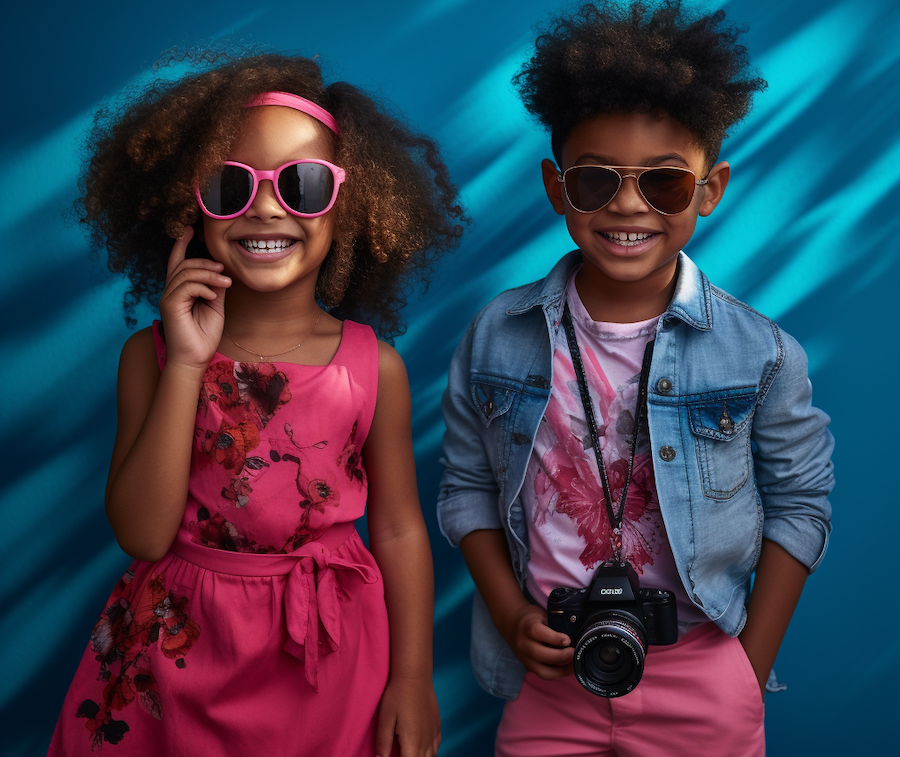
Dressing Kids with Cool Undertones
Regardless of the surface skin tone, some children have distinct cool undertones. For them, colors on the cooler side of the color wheel—like icy blue, seafoam, and rich violet—are the way to go.
Top Pick: A periwinkle tulle skirt or a turquoise shirt.
Dressing kids with cool skin tones guide:
- Soft lilac
- Aqua
- Icy mint
- Steel gray
- Royal purple
Avoid overly warm tones like bright oranges or mustard that can create an imbalance. Stick to crisp, clean cool shades to brighten their look.
Read More: How Children Can Benefit from Culturally Diverse Friendships
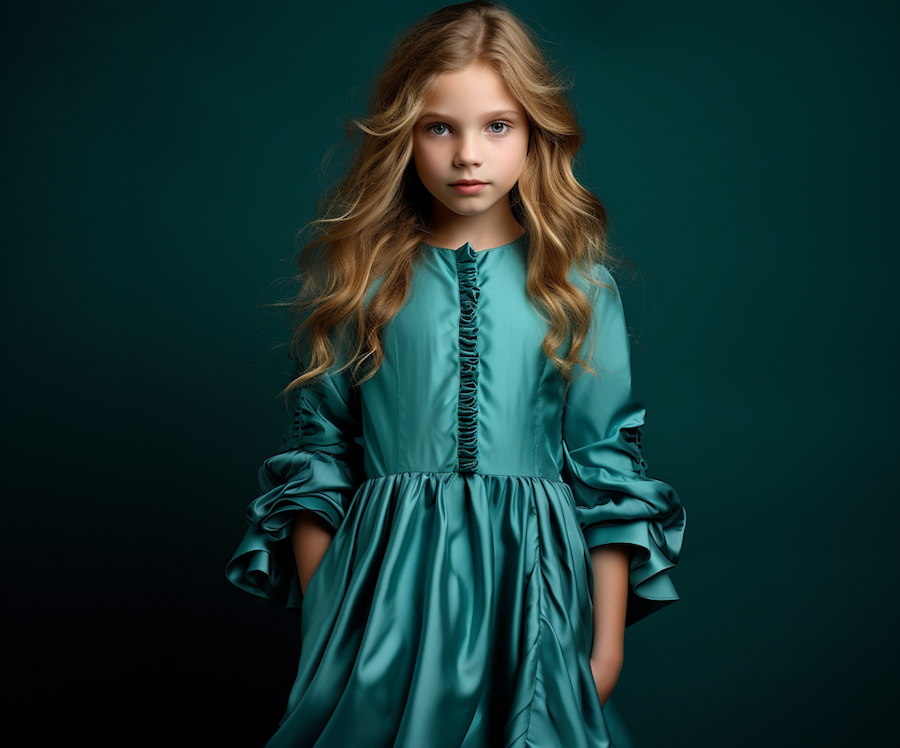
Dressing Kids with Warm Undertones
Kids with warm skin tones radiate in golden hues. Think sunshine yellow, burnt orange, caramel, and bronze. These colors accentuate their warm glow and create a harmonious effect.
Top Pick: A golden-yellow cotton dress or a rust-orange sweater.
Kids fashion tips for warm skin tones 2025:
- Honey gold
- Olive green
- Apricot
- Amber
- Mocha
Stick with warm, earthy tones and metallics like gold. These shades enhance the skin’s natural luminosity and look fantastic in both summer and winter wardrobes.
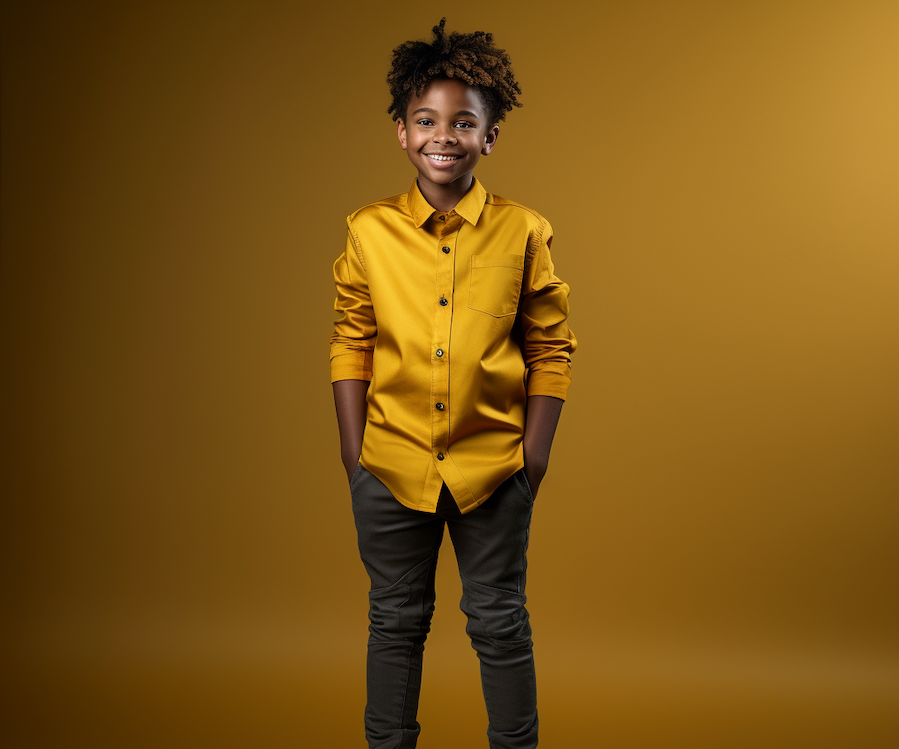
How to Match Kids Clothes to Skin Tone
When building a wardrobe, it’s important to understand how to match kids clothes to skin tone. Here’s a quick guide:
| Skin Tone | Complementary Colors | Avoid |
|---|---|---|
| Fair | Soft pastels, jewel tones | Neon yellow, stark white |
| Medium | Earth tones, turquoise | Pale beige |
| Olive | Coral, deep red, teal | Muddy green |
| Tan | Maroon, mustard, aqua | Very light pastels |
| Dark | Bright hues, jewel tones | Ashy browns |
Want to keep it easy? Create seasonal mood boards and test colors under natural light. Don’t forget accessories—shoes, hats, and backpacks near the face also influence the look.
Nuances to Consider
- Seasonal Changes: As seasons shift, so does your child’s skin tone. A summer tan might expand the color palette, while winter lightness could call for a softer range.
- Prints and Patterns: Bold patterns can help blend shades if you’re mixing warm and cool colors.
- Event and Occasion: Bright partywear looks different under lights—test your choices ahead of time.
When following kids fashion guide by skin tone 2025, always factor in environmental lighting, seasonal shifts, and comfort.
Final Thoughts: Dressing with Confidence and Color
Now that you know how to dress kids with different skin tones, it’s time to apply that knowledge in practical, empowering ways. From understanding how to choose clothes for kids skin tones to building out a wardrobe by season and occasion, the journey of dressing your child becomes more intentional—and far more fun.
Whether you’re shopping for best clothes for kids with dark skin tones, planning a photo shoot for a child with fair skin, or curating a capsule closet for a medium-toned child, one principle remains true: color has power.
Confidence grows when kids feel good in what they wear. And as caretakers, it’s our job to nurture that self-esteem by helping them look and feel their best.
So, experiment, play with combinations, trust your eye, and most importantly—invite your child into the process. After all, fashion is an extension of their personality and a celebration of their unique identity.
